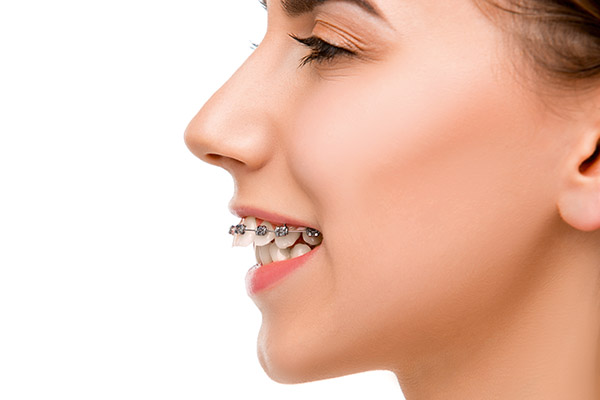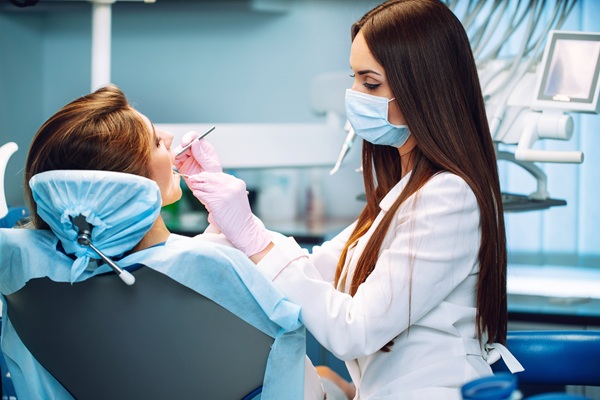 An orthodontist can help to fix bite issues like an overbite. The term refers to your upper teeth extending further past the lower set. The condition is commonly referred to as “buck teeth.” How far your top teeth protrude further than the lower set determines the severity of the condition.
An orthodontist can help to fix bite issues like an overbite. The term refers to your upper teeth extending further past the lower set. The condition is commonly referred to as “buck teeth.” How far your top teeth protrude further than the lower set determines the severity of the condition.
An overbite should not be confused with an overjet. Both involve the front set protruding past the lower set, but the upper set of teeth protrude at an angle with overjets. Overbites can be caused by various factors like genetics, missing teeth, or a person’s jaw shape. Childhood habits like thumb sucking, tongue thrusting, and long-term bottle use can also lead to the condition.
How an orthodontist treats overbites
Some of the treatment options our orthodontist might recommend for patients with overbites include:
1. Braces
Traditional metal braces are the standard when it comes to treating severe overbites. These appliances can also be used to address a wide range of teeth alignment issues like crooked teeth or a misaligned jaw.
Braces consist of brackets that are cemented to each of the patient’s teeth and wires that connect brackets on each dental arch. Tightening these wires creates a gentle force that slowly pushes the wearer’s teeth to a more suitable position.
Once the patient’s teeth have been moved to the targeted positions, bands, springs, and coils can then be added to the appliance to help align and shift the patient’s jaw.
Braces are fixed appliances, so they cannot be removed at home. Treatment times with braces can be anywhere between 12 to 36 months. The patient comes in for inspections and adjustments monthly to ensure things are running smoothly with their treatment.
Patient’s who have their overbites addressed with braces will probably have to wear a retainer after their treatment. Retainers help to keep teeth in their new positions.
2. Clear aligners
Clear aligners provide a less visible way to address an overbite. However, these devices can only be used to correct mild to moderate overbites caused by poor teeth positioning. Overbites caused by jaw misalignment cannot be fixed with clear aligners. Other devices like braces are needed to help improve the alignment of the patient’s jaw.
Treatment with clear aligners involves getting several sets of trays at the start of their treatment. Each set is worn for a couple of weeks before being switched out with another that takes over from where it stops. The patient’s teeth should be at the targeted position by the time they are done with all their trays.
Treatment with clear aligners tends to be the more convenient approach since these appliances can be easily removed and reinserted into the mouth. The aligners do not get in the way of meals or oral hygiene. The most challenging thing for most people who wear clear aligners is remembering to wear their aligner trays for 22 hours daily.
We can fix your overbite
Ready for a smile you can be proud of? Call or visit our Monrovia clinic to set up an appointment with our orthodontist.
Request an appointment or call Kathleen C. Hwang Orthodontics at 626-425-9986 for an appointment in our Monrovia office.
Recent Posts
Are you considering your teeth straightening options? Read on to learn more. Imperfect teeth can lower self-esteem and prevent people from smiling naturally. With all the advances in orthodontics, there are more options for getting straighter, healthier teeth. Getting a teeth straightening procedure is well known for cosmetic reasons, but its health benefits are noteworthy…
Space maintainers are common dental pieces that are placed where teeth once were. The empty space created by dislodgement or extraction can put the oral cavity at risk, which is why the role that space maintainers play is so large. Orthodontists and many other dental professionals recommend space maintainers to set the child up for…
The American Association of Orthodontists recommends bringing your child to an orthodontist for a bite evaluation before they reach seven. Early detection of issues with the alignment of a child’s teeth or jaw makes it easier to correct them. The child’s jaw and facial structures are still developing at this point, making it easier to…


